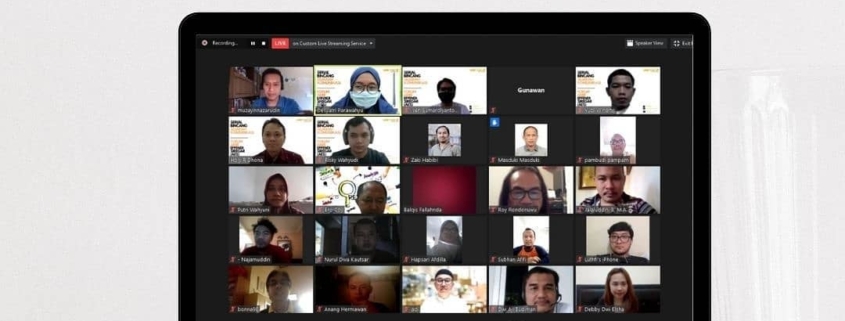Stagnation of Semiotic Studies in Indonesia: Considered as a Text Analysis Tool, Rather than Paradigm
In the Amir Effendi Siregar forum on September 26, 2020, Muzayin Nazaruddin, Lecturer for Department of Communication Science of UII, conveyed some of the boredom and mistakes of researchers in Indonesia regarding the use of semiotic analysis in dissecting text in sign systems.
Muzayin, who is pursuing his Ph.D. study at Tartu University in the field of semiotics, sees the error in the perspective of semiotics by many researchers in Indonesia. “In Indonesia, semiotics is only seen as a method, not as a paradigm,” said Muzayin.
So far, if you want to analyze a text, images, videos, literary works, poetry, you will definitely use semiotics. “It’s a paradigmatic mistake. In communication there is a semiotic tradition, a way of looking at phenomena with a semiotic perspective,” said Muzayin.
Muzayin gave an example of a study that was commonly carried out by students and, unfortunately, also carried out by researchers. For example, research looks at what symbols appear in certain films or media. What is the meaning contained. For example, there are students researching patriotism in films. But if we then reflect on it, it turns out that he did not contribute anything to the development of the concept of patriotism.
Returning to the tendency of semiotics to be a text analysis tool rather than a paradigm. When semiotics is seen as a paradigm, it is not limited to just a method of analysis. The semiotic paradigm allows researchers to see every event, phenomenon, media, and natural phenomenon with a semiotic perspective.
For example, at Tartu University, where Muzayin took his doctoral program in Semiotics, there were various studies based on semiotics. Such as Cultural Semiotics, zoo semiotic, and even some that are not yet common in Indonesia which in Tartu are called bio-semiotic.
Then he continued his explanation by giving an example that if all communication phenomena, events are seen as a sign, which we can see at the receiver level, or at the production level, or at the context level if all are seen in a semi-related relationship, then all events can be analyzed using semiotics.




